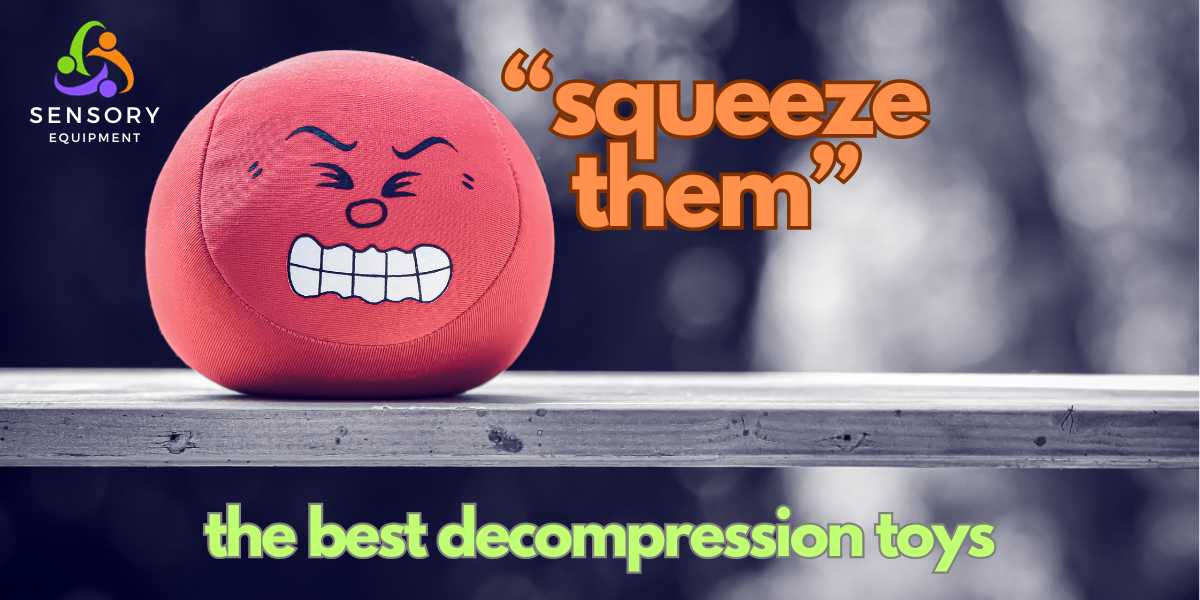In a fast-paced, modern world, stress and sensory overload are prevalent concerns for many individuals. However, for those with Autism Spectrum Disorder (ASD) and Attention Deficit Hyperactivity Disorder (ADHD), these challenges can be even more pronounced. The good news is that a new generation of decompression sensory toys has emerged, offering support and benefits that go beyond what the original stress ball could provide.
What Are Decompression Toys?
Decompression toys, also known as fidget toys or sensory toys, are a diverse range of handheld items designed to help individuals alleviate stress, reduce anxiety, and improve focus and attention. These toys come in various forms, shapes, and materials, catering to individual preferences and needs. Some common examples include fidget spinners, stress balls, pop-it toys, squishy toys, and textured stim toys.
Benefits for Individuals with Autism
For individuals with Autism Spectrum Disorder, sensory processing challenges are a fundamental part of their daily lives. Decompression toys can offer a myriad of benefits, including:
- Calming Sensory Stimulation: Many decompression toys offer tactile and auditory feedback, which can help individuals with autism regulate their sensory input. The repetitive motion of squeezing a stress ball or popping a bubble on a pop-it toy can be soothing and provide a sense of control.
- Stress Reduction: Decompression toys can help reduce anxiety and stress levels by providing a safe and socially acceptable outlet for stimming behaviours. This helps individuals with autism cope with overwhelming situations and emotions.
- Improved Focus: Fidget toys can assist in maintaining attention and concentration. Some individuals with autism find that having a small, tactile item to fidget with can actually enhance their focus, particularly in situations where they might otherwise become overwhelmed or distracted.
- Social Inclusivity: Many modern decompression toys are designed to be discreet, allowing individuals with autism to use them without drawing unwanted attention. This promotes social inclusivity by reducing potential stigmatisation.
Benefits for Individuals with ADHD
Individuals with Attention Deficit Hyperactivity Disorder also find tremendous value in decompression toys, including:
- Enhanced Concentration: Fidget toys can act as a physical outlet for excess energy, allowing individuals with ADHD to better focus on tasks. The gentle, repetitive movements can be calming and can help reduce impulsive behaviours.
- Stress Reduction: The act of fidgeting or squeezing a stress ball can help alleviate stress and anxiety, which are often co-occurring issues with ADHD.
- Self-Regulation: Decompression toys offer a non-disruptive way for individuals with ADHD to self-regulate their sensory needs and emotions in various environments, such as the classroom or workplace.
- Improved Productivity: Some studies suggest that fidgeting with certain toys can actually improve task performance in individuals with ADHD by promoting a balance between over-stimulation and under-stimulation.
Conclusion
Decompression toys have come a long way since the original stress ball, evolving to address the specific needs of individuals with Autism Spectrum Disorder and Attention Deficit Hyperactivity Disorder. These toys offer a wide array of benefits, including stress reduction, improved focus, and sensory regulation. They not only help individuals with autism and ADHD manage their symptoms but also promote social inclusivity and greater productivity. As our understanding of neurodiversity continues to grow, the importance of these innovative tools becomes increasingly clear in providing support and relief to those who need it most.











